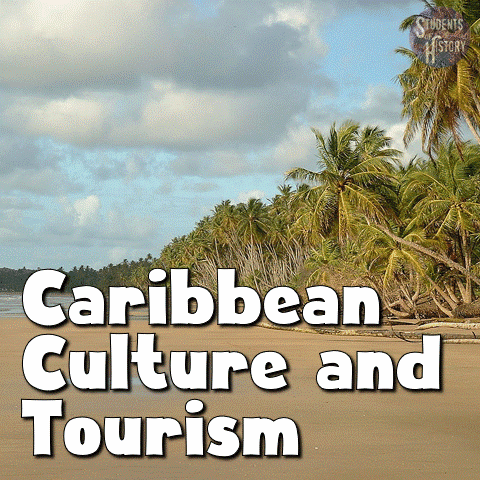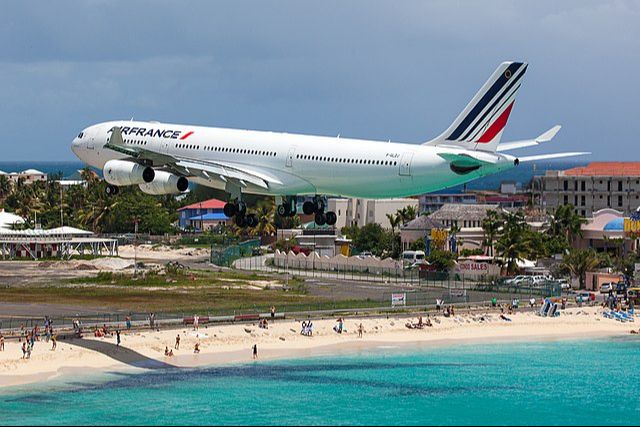Caribbean Culture and Tourism

The Caribbean’s vibrant culture and breathtaking landscapes have made the region a sought-after tourist destination for those seeking both natural beauty and cultural experiences.
Tourism has had both positive and negative impacts on the natural and human geography of the Caribbean and the cultural dynamics that shape the tourism experience.
Caribbean Culture
The Caribbean is home to a diverse mix of ethnicities, languages, and religions that stem from centuries of colonization, the transatlantic slave trade, and immigration.
These cultures derive their influences from a mixture of indigenous, African, European, Asian, and Middle Eastern traditions.
During the Pre-Columbian era, this region was occupied by various indigenous peoples including the Taino, Kalinago, and the Arawak.
These cultures had their own distinct languages, social structures, and artistic expressions.
During the era of European colonization from 1492 to the 17th century, the Spanish, Portuguese, Dutch, English, and French established colonies throughout the Caribbean region. This led to the near extinction of the indigenous populations due to disease, violence, and forced labor.
European colonizers turned to Africa for a cheap and abundant labor force and enslaved Africans to toil on sugar, tobacco, and coffee plantations. This period had a profound impact on shaping Caribbean societies, as African cultures blended with those of the indigenous peoples and Europeans, creating a unique Afro-Caribbean culture.
In 1791, enslaved people on Saint Domingue began a rebellion that led to them declaring independence for the new nation of Haiti. On its first day of existence, Haiti banned slavery, becoming the first nation to do so.
As slavery was abolished across the rest of the Caribbean in the 19th century, indentured laborers were brought from India, China, and other areas. The Caribbean’s diverse cultural landscape continued to expand as these new communities interacted with the existing Afro-Caribbean and European populations.
Cultural expressions such as music, dance, cuisine, and festivals adopted from this diverse mixture are central to Caribbean identity. Carnival is one of the most widely celebrated festivals that is celebrated across the Caribbean with each nation having its own unique version. Each country’s celebration features colorful costumes, lively music, parades, and dancing that all represent their culture. Several music genres such as reggae, calypso, and salsa reflect Caribbean culture and heritage and have global appeal.
Tourism
Tourism is a primary source of revenue for many Caribbean nations, providing employment and economic growth, which in turn, helps to reduce poverty and improve living conditions.
Tourists are drawn to the Caribbean’s white sandy beaches, clear blue waters, and tropical landscapes.

Tourism infrastructure, including hotels, resorts, and transportation, has expanded to help accommodate the growing number of visitors.
This has also led to the development of more modern airports and transportation methods which have benefited both the tourists and the Caribbean nations. However, these developments often cluster at coastal areas, impacting land use patterns.
Tourism has also fostered cultural exchange in this region, as visitors engage with local traditions, foods, and arts. Cultural tourism initiatives highlight the region’s diverse heritage, helping to preserve and promote Caribbean culture throughout the world.
However, tourism has also brought its share of problems. Intensive tourism development has led to habitat destruction, coral reef damage, and pollution. Tourism infrastructure has caused erosion in coastal areas and led to rising sea levels, as well causing overcrowding and displacement of local communities. This land pressure can disrupt traditional land use, agriculture, and fishing.
Across many islands, tourism has brought economic growth and social inequality. The wealth generated by tourism often does not reach local communities, leading to disparities between the rich and the underserved communities.
Puerto Rico has experienced negative effects of cultural exchange. The commercialization of areas catering to tourists have lost their authentic local experience. Old San Juan has faced challenges balancing tourism development while preserving its historical and cultural integrity.
The over-dependence of tourism in the Jamaican economy has made it vulnerable to external factors such as downturns in the airline or cruise industries, and natural disasters.
As Caribbean nations continue to evolve as a popular tourist destination, it is essential to strike a balance between economic growth, cultural preservation, and environmental sustainability. Sustainable tourism practices aim to minimize the negative environmental impacts and help raise awareness.